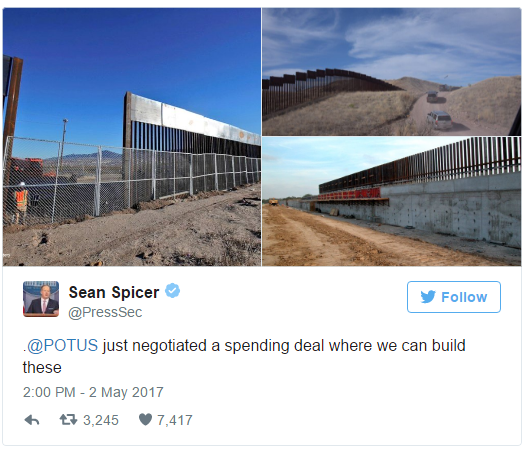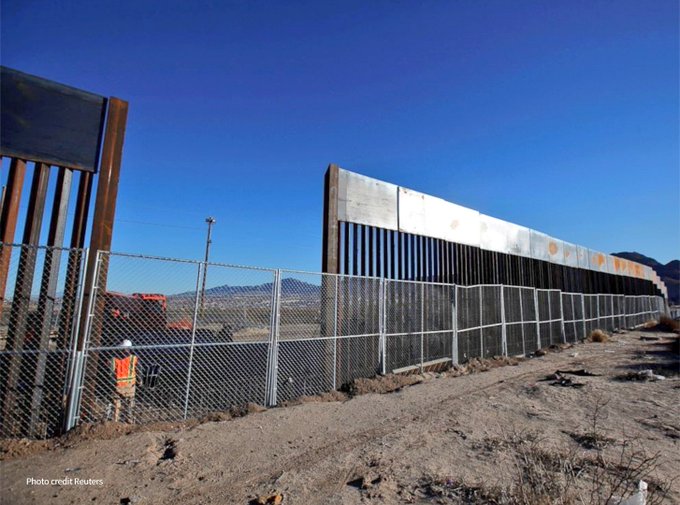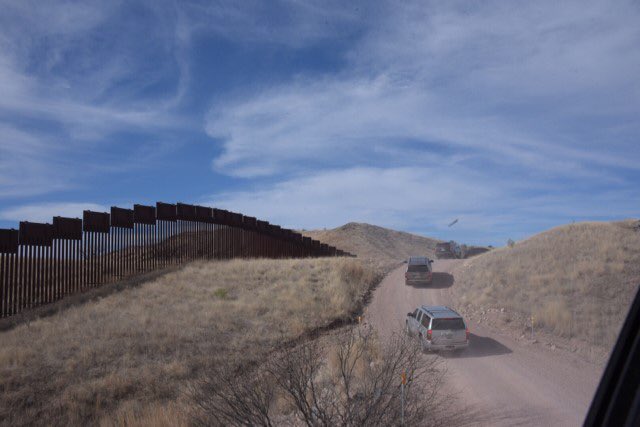Donald Trump isn’t backing down from his promise to make Mexico “eventually” pay for the wall, but he’s getting the project started with money appropriated in this week’s proposed budget legislation.
The White House insisted Tuesday that the $1 trillion spending bill includes money for 40 miles of border fencing, as President Trump sought to shore up Republican voters by saying the deal also lays the groundwork for rebuilding the military.
The president said there is “enough money to make a down payment on the border wall,” and said a $15 billion boost in defense spending — without having a dollar-for-dollar match in domestic spending — has set a new standard that will benefit Republicans and the Pentagon.
“This is what winning looks like,” Mr. Trump said.
Republicans bristled after Democrats declared victory on the spending bill Monday, saying they had won every major fight by keeping money flowing to Planned Parenthood and sanctuary cities, boosting spending for the National Endowment for the Arts, bailing out Puerto Rico’s troubled Medicaid system, expanding college aid for poor students and preserving the Environmental Protection Agency’s budget.
“We have more money now for the border than we’ve gotten in 10 years,” said Mr. Trump. “The Democrats didn’t tell you that. They forgot.”
And more good news may be in store for Republicans disappointed with the budget legislation. While the GOP needs 60 votes to pass the bill initially, subsequent reconciliation measures will only need 50 votes. There, congressional Republicans may be able to finally cut funding for Planned Parenthood and Obamacare.
Update: White House Staff is now under fire for claiming a see-through fence and levee flood protection system ss a ‘border wall’
The latest controversy began with White House Press Secretary Sean Spicer Tweeting out photos of a levee wall along the border and see-through border fence that illegal aliens and drug and human traffickers regularly cut through. Spicer argued, without calling any of them a “wall” like the one Trump promised on the campaign trail, that the president “just negotiated a spending deal where we can build these.” He explicitly did not call the photos a “border wall” on his Twitter account.
Technically, Spicer’s Tweet is accurate. The spending bill, which funds the government until the end of the fiscal year, does account for the construction of levee walls and extra steel fencing, but that is far short of the president’s campaign promise of an actual border wall.
But what Spicer did next was highly problematic and potentially hurts President Trump’s efforts to succeed later in the year in delivering an actual border wall when the next spending bill comes up in September. Spicer directed one of his deputies, Lindsay Walters, to call Breitbart News and pitch the photos in Spicer’s Tweet as a “border wall.”
Noting that Spicer directed her to call Breitbart News and argue that the photos represent a “border wall,” Walters pushed back when Breitbart News argued that a see-through fence and a levee wall do not constitute a “border wall” that fulfills President Trump’s campaign promise.
“There are two types of walls, a levee wall and a bollard wall,” Walters said in a follow-up email. “Both of which will help secure our borders.”
Technically, levee walls—or flood walls—are common parts of levees designed to deal with flooding. The Rio Grande river constitutes much of the U.S.-Mexico border, so levees—and “levee walls” as Walters argued—are a part of that. They are not meant for border security, but rather for flood management.
But, Walters said in a follow-up email that “A bollard wall and levee wall of this scale will prevent illegal immigrants from crossing the border.”
Walters and Spicer and others in the White House communications office have not answered why Spicer’s original Tweet did not include the term “wall” or “border wall,” but rather described them as “these.”
Source: Washington Times





The GOP is worthless
FIRE TRAITOR RYAN NOW!!….GET RID OF THIS SCUMBAG NOW!!
Liers you scum sold out the American people. Your all traitors
Build The Wall
this is not true !
I am so sick of the Liberal “name game”. If they call it a levee, fence, obstruction, impediment, barrier, or rampart, they think stupid people will believe it is not a wall. However, the definition of WALL includes all of the above. noun
1.
any of various permanent upright constructions having a length much greater than the thickness and presenting a continuous surface except where pierced by doors, windows, etc.: used for shelter, protection, or privacy, or to fence in an area, etc.
2.
Usually, walls. a rampart raised for defensive purposes.
BS it even cut out monies for the wall from the 2006 bill, the GOP is worthless
Build that wall!!! And let as many come here as they want as long as its legal
get rid of half of congress and we will have plenty of money for the wall
Awful Sight!!!!!